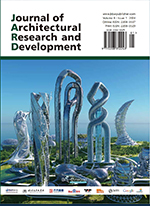Research on Public Engineering Emergency Decision-Making Based on Multi-Granularity Language Information
Abstract
To effectively deal with fuzzy and uncertain information in public engineering emergencies, an emergency decision-making method based on multi-granularity language information is proposed. Firstly, decision makers select the appropriate language phrase set according to their own situation, give the preference information of the weight of each key indicator, and then transform the multi-granularity language information through consistency. On this basis, the sequential optimization technology of the approximately ideal scheme is introduced to obtain the weight coefficient of each key indicator. Subsequently, the weighted average operator is used to aggregate the preference information of each alternative scheme with the relative importance of decision-makers and the weight of key indicators in sequence, and the comprehensive evaluation value of each scheme is obtained to determine the optimal scheme. Lastly, the effectiveness and practicability of the method are verified by taking the earthwork collapse accident in the construction of a reservoir as an example.
References
Yan L, Wang P, Zhang R, et al., 2023, A Task-Level Emergency Experience Reuse Method for Freeway Accidents Onsite Disposal with Policy Distilled Reinforcement Learning. Accident Analysis and Prevention, 190(9): 107179.
Yazdani A, Hilbrecht M, Imbeau D, et al., 2018, Integration of Musculoskeletal Disorders Prevention into Management Systems: A Qualitative Study of Key Informants’ Perspectives. Safety Science, 104(4): 110–118.
Madi N, Srour I, 2019, Managing Emergency Construction and Demolition Waste in SYRIA Using GIS. Resources Conservation and Recycling, 141(2): 163–175.
Wang H, Liu Y, Fang J, et al., 2022, Emergency Restoration Method of Integrated Energy System in Coordination with Upper and Lower Control. Energy Reports, 8(1): 238–247.
Zhang L, Liang C, Yang Z, 2022, Research on the Emergency Decision-Making Method Based on Case-Based Reasoning Under Triangle Fuzzy Preference. IAENG International Journal of Computer Science, 49(1 Pt.1): 11–18.
Yuan J, Li X, Xiahou X, et al., 2019, Accident Prevention Through Design (PtD): Integration of Building Information Modeling and PtD Knowledge Base. Automation in Construction, 102(6): 86–104.

